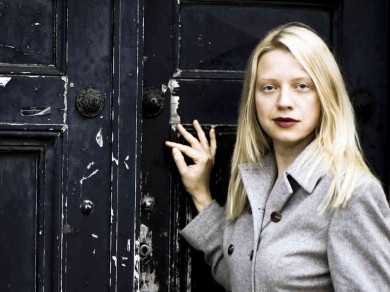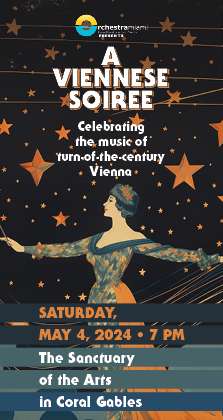Lisitsa serves up a marathon display of power with sensitivity

Valentina Lisitsa performed a three-and one-half-hour recital Saturday night for Friends of Chamber Music.
Valentina Lisitsa enthralled a rapt audience of pianophiles Saturday night with a nearly three-and-one-half hour recital for Friends of Chamber Music at Gusman Concert Hall in Coral Gables. In place of the originally announced Shostakovich Second Sonata and Schubert-Liszt Schwanengesang, the Ukrainian-born pianist offered a generous selection of works by Rachmaninoff, Beethoven, Chopin, Schubert and Liszt, retaining Prokofiev’s Sonata No. 7 from the original lineup.
After winning the 1991 Dranoff Two Piano Competition in Miami as a duo with her husband Alexei Kuznetsoff, Lisitsa began a solo career performing in major concert venues in the United States and abroad. A career slump led to her establishing a strong presence on YouTube, her videos drawing millions of viewers and a resurgence of orchestral and recital engagements. The Lisitsa phenomenon is more than just shrewd marketing and utilization of web media. Always a brilliantly gifted and virtuosic pianist, Lisitsa’s formidable technique is now matched by great sensitivity and artistic insight. Her recital amply demonstrated Lisitsa’s ability to put a personal stamp on every score she assays.
A plethora of colors illuminated the sunlight and shadows of darkness that lurk beneath the surface of six Rachmaninoff preludes. In the opening Prelude No. 5 in G Major, Op. 32, Lisitsa played with a light, pearly tone, superbly coordinating the evocative melody in the right hand with the rippling waves of the left. The famous G minor prelude, Op. 23, No. 5 became a display of speed and dexterity, tempered by the dreaminess and languor of the central episode.
Prokofiev’s Seventh Sonata was premiered by Sviatoslav Richter in 1943 and given its initial American performances by Vladimir Horowitz. This dark, percussive work requires nothing less than those artists’ level of fearless technique mated to pristine musicianship. Lisitsa rose to the challenge with a reading that gave full weight to Prokofiev’s brutal, motoric rhythms while revealing often untouched inner shadings. While Lisitsa captured the brutality of the mock march in the opening Allegro inquieto, the bleak countermelody was perfectly weighted, the intimations of poignancy and tragedy potently conveyed.
Her spare pianistic strokes distilled the balletic line of the Andante coloroso, Prokofiev’s quirky lyricism singing in an restrained manner. Lisitsa’s unflagging energy and stamina were on full display in the final Toccata, the cluster chords flying across the keyboard at high speed with remarkable accuracy and transparency. The intimations of jazz in the contrasting episodes were slyly integrated into a reading that emphasized the brooding underpinnings beneath the powerhouse display.
Lisitsa’s version of Beethoven’s “Appassionata” Sonata No. 23 in F minor was replete with surprising touches. Supple variations of dynamics from the softest shading to thunderous eruptions enhanced the majestic flow of the first movement. Lisitsa took a measured approach to the repeated theme of the Andante con moto, the variations characterful without loss of pulse and musical line. The Presto coda in the tempestuous finale may have broken a record for sheer speed.
Eight Chopin nocturnes illustrated Lisitsa’s poetic side, her exquisite touch and sense of color revealing an idiomatic feeling for Chopin’s pianistic bel canto. There was a wonderful, almost improvisatory aura to the posthumous C-sharp minor prelude, the rapid runs perfectly judged and articulated.
The spirit of Liszt offered an appropriate conclusion to a powerhouse recital. The Hungarian Rhapsody No. 12 was playful, Lisitsa drawing bell-like sonorities from the Steinway. Four Liszt transcriptions of Schubert songs found Lisitsa mixing grace with intense drama. Erkonig was a high-wire ride, Lisitsa’s voicing of the father, child and death never becoming muddied or indistinct. There was a fierce edge in the Totentanz, the Dies irae sounding with Beethovenesque monumentality. Lisitsa’s fiery, propulsive reading concluded in sweeping chords ringing at top decibels.
After such a long and demanding program, Lisitsa rewarded the cheering audience with two Liszt encores. His familiar transcription of Schubert’s Ave Maria was large in pianistic scale, intimate in scope while La Campanella danced with feathery grace.
Friends of Chamber Music continues 4 p.m. January 5, 2014 with pianist Joseph Kalichstein, clarinetist Ricardo Morales and violist Roberto Diaz in an all-Brahms program. 305-372-2975 miamichambermusic.org.
Posted in Performances
3 Responses to “Lisitsa serves up a marathon display of power with sensitivity”
Leave a Comment
Sun Dec 8, 2013
at 1:24 pm
3 Comments







Posted Dec 08, 2013 at 1:59 pm by diane ashley
brava to valentina…i was exhausted and exhilerated at the end, she was fresh as a daisy and ready for more. what a huge talent
Posted Dec 13, 2013 at 12:40 am by Eric Walter
Valentina was amazing…
Posted Jan 05, 2014 at 9:38 am by Beni
She is my tops! I love her sense of humor, positive attitude and courage.